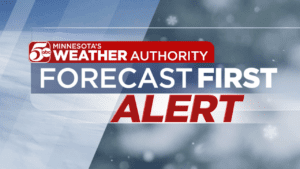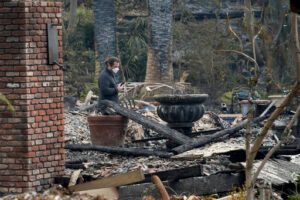
WATCH VS. WARNING
A flood watch is issued when weather conditions are favorable to see flooding in an area. This doesn't guarantee flooding will happen, but instead indicates the potential for flooding. A flash flood watch gives the public time to prepare for potential flooding. We typically will have a Flood watch ahead of weather events that end up producing flood warnings.
A flood warning means flooding is happening or about to happen (inevitable). Flood warnings require the public to act immediately within the warning area.
Flash flooding is particularly dangerous because it can occur very quick. Heavy rain within six hours or less can produce flash flooding, which can also cause things like erosion, and mudslides. Topography, soils type and degree of soil saturation are all contributor to how both flash flooding and flooding in general occur.
A flood advisory will be issued when flooding is expected in a specific area, but the flooding is not expected to be bad enough for a warning. So, this level of flood concern is more nuanced. A Flood Advisory is issued to help the public be aware of this lesser degree of threat.
HOW TO PREPARE AT HOME
To prepare for flooding at home, I'd first recommend having flooding insurance. Minnesota weather is now, on average, generally more wet than it was in the past. We've dealt with more flooding problems as of late. Flooding insurance must be purchase 30+ days before you're dealing with home flooding. It's good to buy insurance before you have a problem. That brings me to the topic of knowing your risk. Where do you live? Are you near a creek, stream, river, low-lying area, or do you live on top of a hill? This knowledge of the flooding vulnerabilities to where you live, will help you decide what planning is necessary to prepare for flooding.
Before flooding occurs, the National Weather Service suggests "install(ing) check-valves in plumbing to prevent flood waters from backing up into the drains of your home. You'll want to make sure your sump pump is working and consider having a backup. Make sure your electric circuit breakers, or fuses, are clearly marked for each area of your home." Make sure your electronics are charged before a flood, and make sure you have a NOAA weather radio. Also, make sure your flashlights have working batteries.
HOW TO PREPARE IF OUTSIDE OR AWAY FROM HOME
I'm sure you've heard meteorologists say "turn around, don't drown." We couldn't be more serious about this topic! Each year, people get swept away by moving water that they think they can drive or walk through. We frequently remind people that 6+ inches of water can stall your car, and easily knock a person off their feet. A foot of water will likely float your vehicle, and once we're talking 2 feet of water, well your car is now a boat likely to sink.
I think what's challenging for people during flooding events is that even knowing the facts that I just listed above, many people think they can eyeball the depth of the water. The truth is during a flood, the depth of moving water is changing (especially a flash flood.) The moving water has also picked up a ton of sediment debris, so it's very difficult to see through the water to get an idea of depth.
Third, the velocity of the moving water will change with differences in topographic slope, and the velocity will also change with changes in volume to the water that contributing to the flooding. As we all know, the faster the water moves, the easier it is to bulldoze through objects, and sweep cars and people away. Are you able you eyeball the speed of river? I know I'm not able to just know the general velocity of moving water without measuring it. So, that unknown regarding velocity of moving water, is another reason why it's too dangerous to take a risk and assume you can walk or drive through flooded areas.
One other thing that's important to mention is that the fastest flowing areas within a flooded river, for example, are not at the margins of the river. The fastest-flowing areas are also not at the surface, but instead toward the middle. You can't see the middle interior portion as we stand to the side of a flooded area. So, by the time someone reaches this midpoint, and finds out that the water is moving too fast to control their vehicle, it's typically too late and too difficult to get back to the shore.
OTHER PREP TIPS
Ready, a national public service campaign, advises citizens do the following in the midst of flooding:
- Do not walk, swim, or drive through flood waters
- Stay away from bridges over fast-moving water
- Evacuate if told to do so, otherwise move to higher ground or a higher floor
- Gather supplies in case you need to evacuate immediately or if services are cut off
- Purchase or renew a flood insurance policy
Meanwhile, those who want to keep neighborhood storm drains clear of debris can "Adopt a Drain" in St. Paul and Minneapolis.
AGENCIES ON FLOODING
Here are a series of resources to help prepare for flooding, to locate assistance and to find or provide aid:













